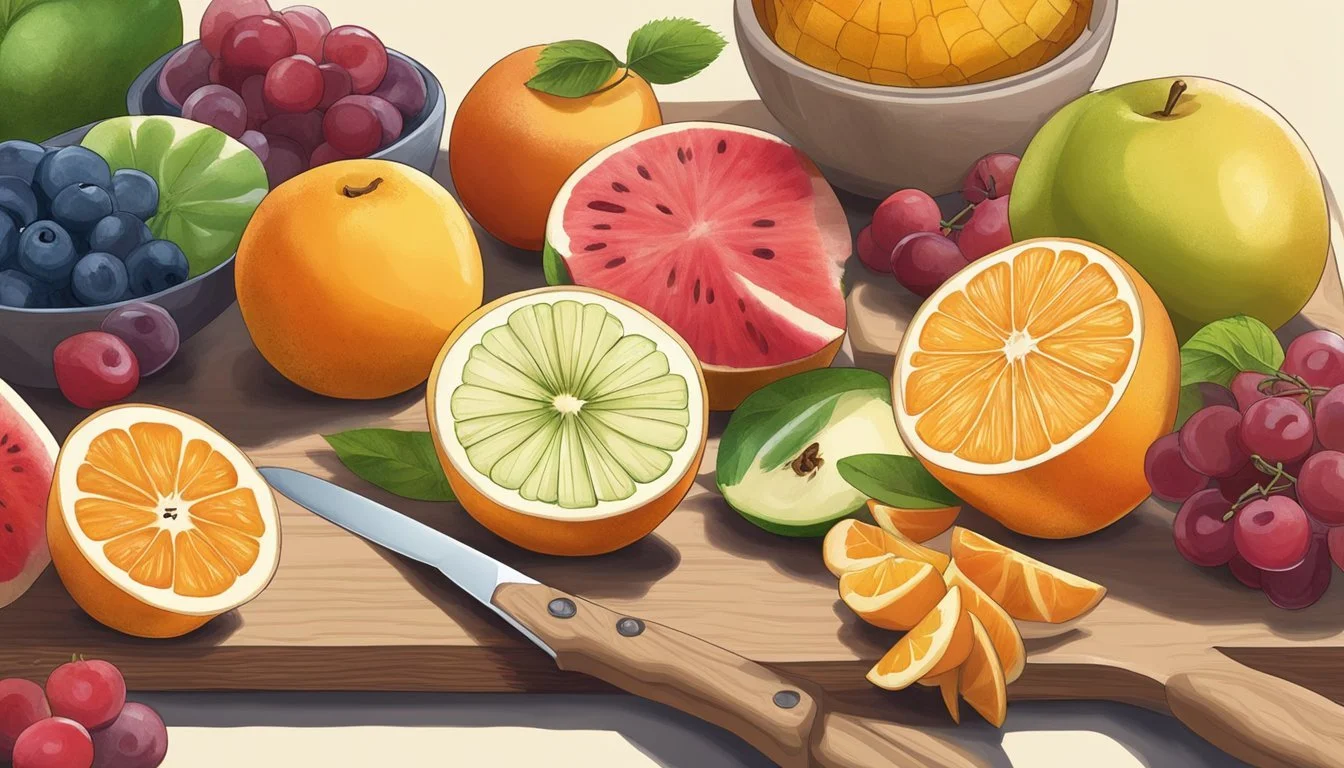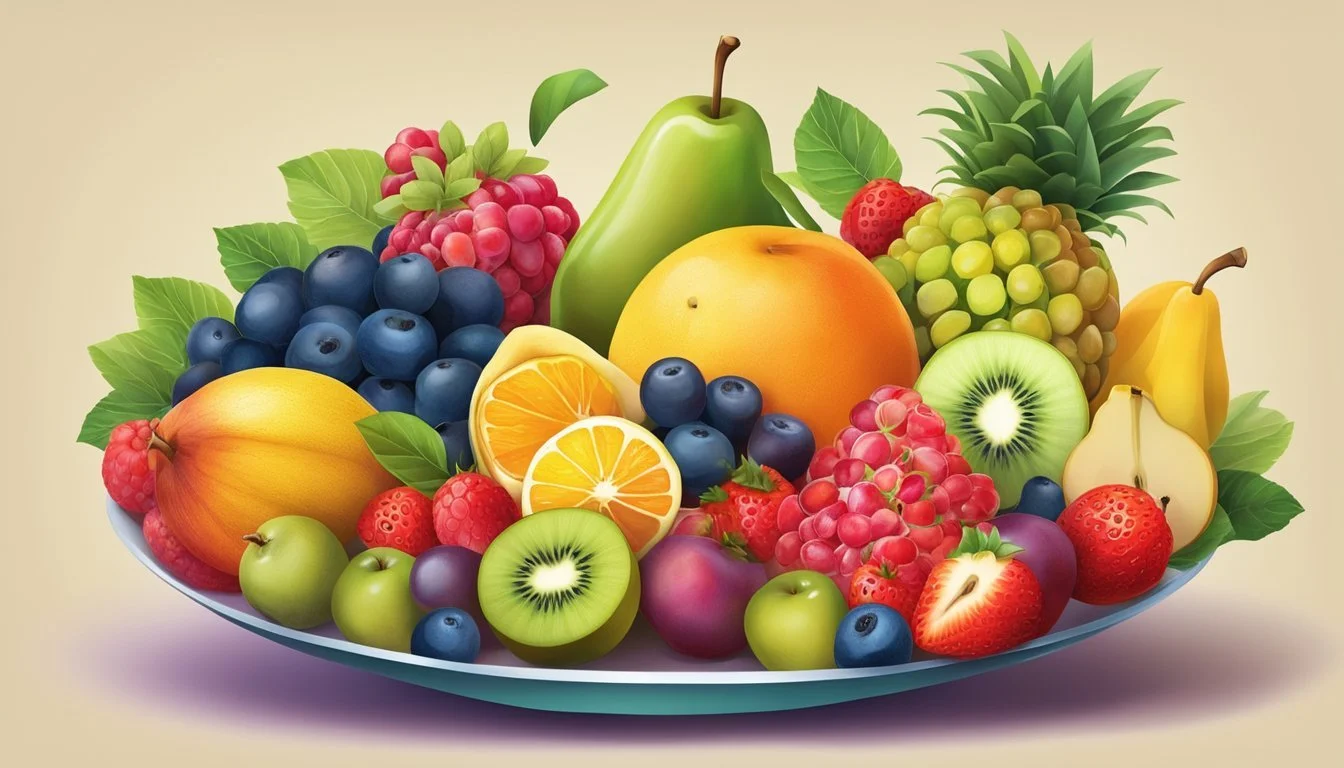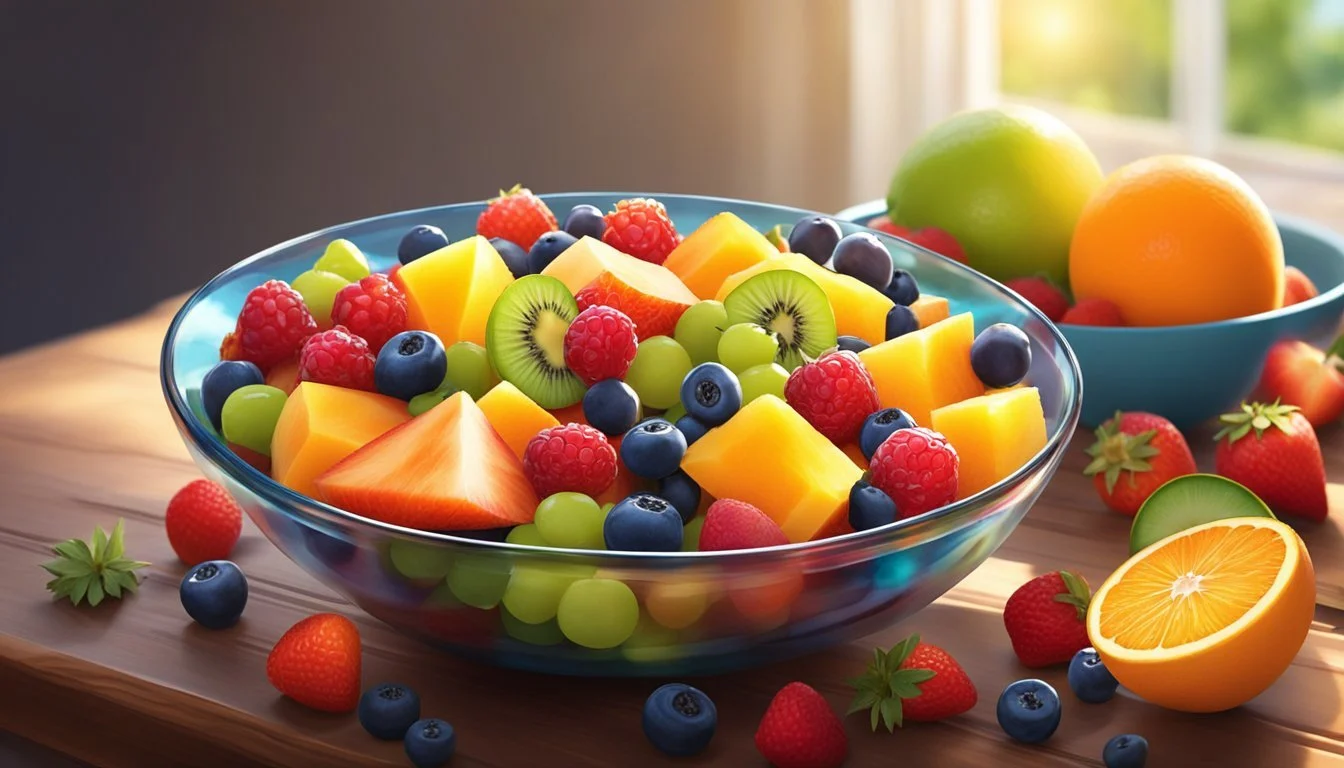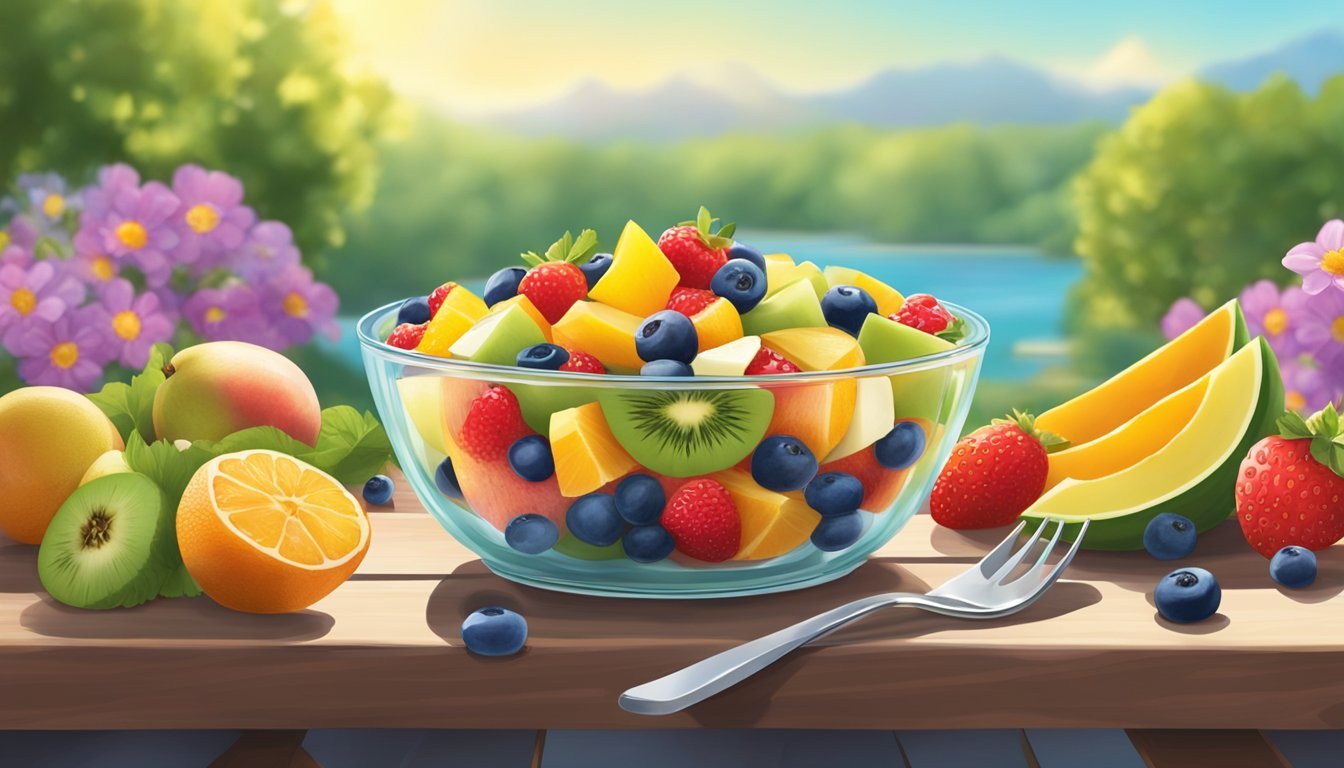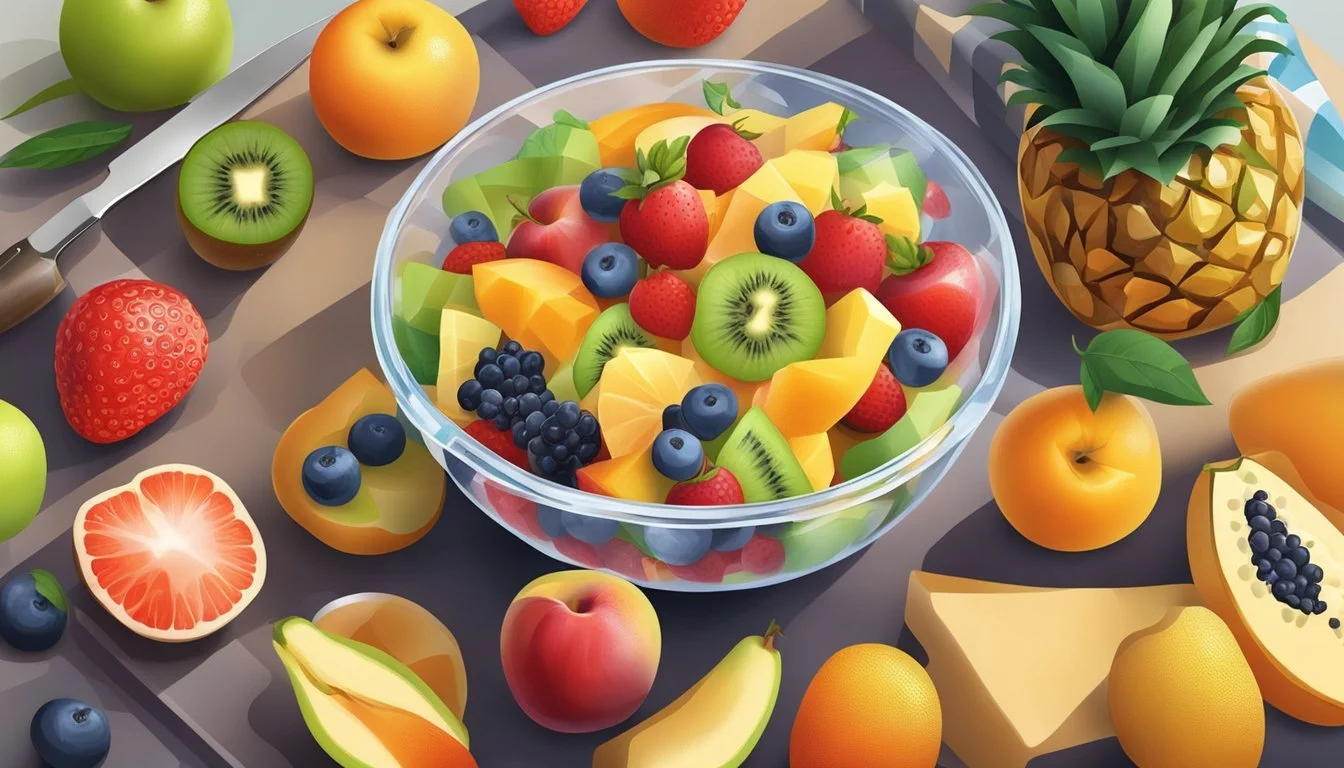How Long Do Fresh Fruit Salads Last?
Understanding Shelf Life and Storage Tips
The shelf life of a fresh fruit (What wine goes well with fruit?) salad is influenced by various factors, including the types of fruits used, how it’s prepared, and how it’s stored. A healthy and refreshing fruit salad made with fresh ingredients is a delight, but it doesn’t last as long as one might hope. Fresh fruits, vulnerable to spoilage from enzymes and microorganisms, begin to deteriorate soon after being cut.
Refrigeration plays a critical role in extending the lifespan of a fruit salad. When properly chilled, certain fruits like berries can remain fresh for 1 to 2 weeks. However, more perishable fruits, such as bananas (how long do bananas last?), may only last for a few days before their quality starts to decrease.
To maintain the freshness of a fruit salad, proactive measures can be taken. Covering the salad effectively to prevent air exposure and applying citrus-based dressings can help in slowing down the oxidation process that causes browning. Despite these efforts, consumers should always be mindful of changes in texture, flavor, and appearance, which indicate that the salad is past its prime and should no longer be consumed.
Overview of Fruit Salad Freshness
Fresh fruit salads (What wine goes well with salads?) offer a delightful and healthy option for dessert or a snack, but their enjoyable qualities heavily depend on their freshness. Factors like storage conditions, the acidity of fruits, and preparation methods greatly influence how long a fruit salad remains fresh and palatable.
Understanding Freshness and Shelf Life
Fresh fruit salad freshness correlates to its shelf life, the period during which it retains its best quality. Typically, a fruit salad can last in the fridge for up to 5 days under optimal conditions. At room temperature, its freshness diminishes more rapidly, usually within a few hours, due to increased rates of oxidation and potential microbial growth.
Factors Affecting Freshness
Several key elements determine the longevity of a fresh fruit salad's freshness:
Storage Conditions: Refrigeration is crucial, as cold temperatures slow down degradation processes. An airtight container in the fridge maintains freshness longer than a bowl covered with plastic wrap due to reduced exposure to air and environmental contaminants.
Fruit Acidity: Salads containing citrus fruits or others with higher acidity may preserve better due to the natural preservation effects of the acidic environment, which can hinder harmful microorganisms.
Preparation: Properly washing, drying, and cutting of fruits without bruising them aids in extending shelf life, as damaged areas can promote spoilage.
Signs of Spoilage
To determine whether a fruit salad has passed its prime, one should look for:
Appearance: Discoloration or the presence of mold suggests that the salad is no longer safe to consume.
Odor: A sour or off smell is often a telltale sign that the fruit salad has become unsafe to eat.
Texture: If the fruits become excessively soft or mushy, it usually indicates spoilage.
Observing these signs is essential to avoid consuming bad fruit salad which may lead to foodborne illnesses.
Proper Storage Techniques
Ensuring fruit salad remains fresh and safe to consume involves adhering to key storage methods. These include maintaining appropriate refrigeration temperatures, knowing when and how to freeze, and considering alternative storage solutions.
Refrigeration Best Practices
To keep fruit salad fresh, it should be stored in an airtight container or covered securely with plastic wrap to limit exposure to air. Refrigerate the salad promptly to prevent spoilage. The ideal temperatures for storing fruit salad in the refrigerator are between 32°F (0°C) and 40°F (4°C). This temperature range inhibits the growth of bacteria and preserves the fruit's texture and taste.
Extending Shelf Life Through Freezing
While freezing is generally not recommended due to potential texture changes upon thawing, certain hardy fruits may withstand freezing better than others. If one chooses to freeze leftover fruit salad, doing so in an airtight container or a vacuum-sealed bag can minimize freezer burn and extend the freshness. Use freezing as a last resort and note that the quality may not be the same post-thaw.
Alternative Storage Solutions
Aside from refrigeration and freezing, other methods can help keep leftovers fresh. For fruits not sensitive to air exposure, storing in a bowl covered by a kitchen towel, in a cool area, might suffice for short-term storage. However, one must always prioritize safety and quality, and for most fruit salads, the aforementioned refrigeration guidelines should be followed.
Ingredient Selection and Preparation
Making a fresh fruit salad that lasts involves careful selection of fruits and specific preparation methods that enhance freshness. Quality and freshness at the start, along with how the fruit is treated, are crucial to longevity.
Choosing the Right Fruits
Selecting fresh fruit for a salad requires attention to seasonality and ripeness. Opt for fruits that are in season as they are fresher and less likely to spoil quickly. The types of fruit chosen will affect the salad's shelf life; berries, such as strawberries and blueberries, can maintain quality for 1-2 weeks when refrigerated, while fruits like bananas have a shorter window of freshness, lasting only a few days.
Apples and Pears: Look for firmness, with no bruises or soft spots.
Oranges: Choose ones that feel heavy for their size, indicative of juiciness.
Berries: Pick brightly colored, plump ones that are free from mold.
Preparation Methods to Retain Freshness
The method of preparing the fruit is as important as the selection process. Here are steps to maximize freshness:
Washing: Clean all fruits thoroughly under running water to remove any pesticides or dirt.
Cutting: Uniform pieces not only look appealing but also ensure even exposure to any dressings or acids that prevent browning.
Acidulated Water: For fruits like apples, pears, and bananas that oxidize and brown quickly, use acidulated water—a solution of water with acidic substances like lemon or lime juice—to soak the cut fruits (how long do cut fruits last?) briefly.
Sugar: A simple syrup, made by dissolving sugar in water with added lemon juice, can act as a preservative when drizzled over cut fruit.
Dressing: A light dressing with an acid such as lemon or lime juice can add flavor and reduce oxidation.
By carefully choosing the right fruits and employing specific preparation methods, one can ensure their fruit salad remains fresh and visually appealing for an extended period.
Salad Composition and Its Impact on Longevity
The lifespan of a fruit salad is significantly influenced by the types of fruit included and the use of certain preserving agents such as acids and sugars. Understanding the role each component plays can help maintain the freshness and overall quality of the salad.
Impact of Fruit Types on Freshness
Different fruits have varying rates of decay, which affects the freshness of the salad. Berries, for example, can generally stay fresh for 1-2 weeks when refrigerated, while bananas, with their delicate skin, may become soggy within three days. Citrus fruits, like grapefruit and mango, often last longer due to their protective skin and lower water content.
Berries: Keep up to 1-2 weeks.
Bananas: Soggy within three days.
Citrus fruits & Mango: Generally last longer due to protective skin.
Use of Acids and Sugars
Adding acids, such as lemon or pineapple juice, to a fruit salad can extend its shelf life by slowing down bacterial growth and oxidation. The acid can help preserve the flavor and texture of fruits, especially those prone to browning like apples and bananas.
Acid: Preserves flavor and texture.
Pineapple Juice: Slows bacterial growth.
Incorporating sugars or syrup also helps to maintain freshness by creating an environment less favorable for microbial growth; however, excessive sugar can modify the texture, making some fruits too sweet or altering their natural taste.
Sugar/Syrup: Prolongs freshness, risks altering taste or texture.
Health and Nutritional Considerations
When considering the health and nutritional aspects of fresh fruit salads, one must weigh the benefits of consuming such a refreshing and nutritious dish against the risks associated with fruit spoilage.
Benefits of Consuming Fresh Fruit Salads
Fruits in a salad offer a bounty of nutritional benefits. They are a rich source of dietary fiber, which is crucial for digestive health, and provide a variety of essential vitamins and minerals. Consuming fresh fruit salads can contribute to one's daily intake of nutrients such as Vitamin C, potassium, and folate, promoting overall wellness.
Fiber: Fruits like apples, oranges, and berries are high in dietary fiber.
Vitamins: Citrus fruits, kiwi, and strawberries are laden with Vitamin C, vital for immune function.
Concerns Regarding Spoiled Salads
Safety is paramount when it comes to consuming fruit salads. Over time, cut fruits can become a breeding ground for bacteria, leading to foodborne illnesses. It is imperative that a fruit salad be discarded if there are signs of spoilage, such as an off odor or visible mold. The refreshing quality and nutrition of fruit salads deteriorate once fruits start to spoil. Eating contaminated fruits can pose serious health risks, so adhering to safe storage practices and consuming the salad within an appropriate time frame are essential steps for ensuring safety.
Bacteria: Salmonella and E. coli are potential contaminants.
Safety Practices: Refrigerate promptly and keep the container sealed.
Creative Culinary Uses for Fruit Salad
Fresh fruit salads are versatile dishes that can be transformed into delightful recipes, enhancing the culinary experience, especially during summer months when ingredients like berries, peaches, and watermelon are in their prime.
Recipes Incorporating Fruit Salad
One can incorporate fruit salad into a range of recipes that require a refreshing touch or a sweet fruit base. A simple yet elegant option is to serve a scoop of fruit salad alongside a slice of delicate sponge cake, drizzling the fruit with a simple syrup for added flavor.
For a more indulgent treat, they can create an ambrosia salad by mixing fruit salad with whipped cream, shredded coconut, and mini marshmallows, offering a heavenly side dish or dessert. This dish pairs perfectly with summer gatherings and can utilize an array of fruits including oranges, blueberries, and red grapes.
To cater to brunch enthusiasts, chefs may add fruit salad to Greek yogurt or oatmeal bowls for a nutritious and colorful start to the day. They can opt for fruits like nectarines, cantaloupe (how long does cantaloupe last?), and honeydew to keep the meal refreshing and satisfying.
Lastly, it is possible to craft fruit salad popsicles by freezing a mix of fruits such as peaches, berries, and watermelon in popsicle molds filled with a simple syrup or juice. These make a frosty treat that's both delightful and a creative way to serve fruit salad during hot weather.
Seasonal and Event Considerations
When considering the longevity of fruit salads for various occasions, it is crucial to account for seasonal temperatures and the types of fruits used. These factors greatly influence shelf life and suitability for different events.
Fruit Salad for Summer Picnics and Events
Summer picnics and outdoor events often involve high ambient temperatures, which can accelerate the spoilage of fruit salads. For these occasions, it is advisable to:
Select fruits that withstand heat better: Citrus fruits like oranges, and berries are more resistant to warm temperatures.
Serve immediately: Fruit salads should be served quickly after preparation to ensure freshness and prevent spoilage.
Use coolers: If the salad needs to be transported, store it in a cooler with ice packs to maintain a temperature between 32°F (0°C) and 40°F (4°C).
Fruit Salad Variations for Holidays
During holidays, such as Thanksgiving, fruit salads can often be prepared in advance and may include leftover fruits. To maximize the shelf life:
Incorporate citrus or pineapple juice: Adding acidic juices like orange juice or pineapple juice can help preserve the fruit salad, giving it a refreshing taste and deterring oxidation.
Refrigerate promptly: Leftover fruit salad should be refrigerated in airtight containers to extend its freshness for up to 3-4 days.
Advanced Preservation Techniques
When aiming to extend the shelf life of a fresh fruit salad, one should consider the role of preservatives and understand the oxidation process which leads to browning and spoilage.
Chemical Additives and Natural Preservatives
Chemical Additives: For commercial purposes, chemical preservatives such as ascorbic acid or calcium chloride can be used to maintain freshness and extend the edibility of fruit salads. When used appropriately, they keep the fruit from becoming soggy and prevent discoloration by slowing down the oxidation process.
Ascorbic Acid (Vitamin C): Often used in the form of a diluted solution to coat the fruit, it maintains color and firmness.
Calcium Chloride: Used to keep the fruit crisp and prevent them from turning too soft.
Natural Alternatives: Some natural substances also serve as effective preservatives and are preferred for their lack of artificial ingredients:
Acidic Juice: Lemon or other citrus juices, rich in citric acid, can be sprinkled over a fresh fruit salad to reduce oxidation.
Sugar Syrup: A solution of sugar dissolved in water can act as a preservative by creating an unfavorable environment for microbial growth.
Understanding the Oxidation Process
The browning of fruit in a salad is primarily due to oxidation, a chemical reaction that occurs when fruit is exposed to oxygen. This process can be slowed down through the following methods:
Vacuum Sealing: By removing air, vacuum sealing can significantly slow down the oxidation of fruits, preserving both texture and appearance.
Soda Soak: Soaking fruit pieces in sodas like Sprite or 7-Up, which contain citric acid and other preservatives, can temporarily stave off browning and keep fruits looking fresh.
Key Points:
Oxidative browning occurs when enzymes in fruit react with oxygen.
Limiting exposure to oxygen, using acids, or employing vacuum sealing can delay this process.
Fruit Salad as a Component in Larger Meals
Fruit salads offer a versatile and refreshing addition to larger meals, enriching menus with their vibrant colors and nutritional value. Expertly combining a variety of fruits can enhance both the presentation and taste of breakfast, lunch, and dessert options.
Incorporating Fruit Salad in Breakfast and Desserts
Breakfast: Introducing fruit salad into the breakfast menu caters to a nutritious and energizing start to the day. A chef might combine blueberries and mango cubes with a sprinkling of poppy seeds for added texture and nutrients. This blend can serve as a standalone dish or complement other breakfast staples such as oatmeal and yogurt.
Example 1: Oatmeal topped with a colorful mix of raspberries, blueberries, and mango pieces.
Example 2: Greek yogurt layered with fruit salad and a drizzle of honey for a decadent yet healthful parfait.
Desserts: In the context of desserts, fruit salad can act as a light and refreshing option, especially following a rich main course. It also plays a role in baking by adding natural sweetness and moisture to cakes and pastries.
Example 1: Vanilla bean-infused fruit salad included in individual tart shells.
Example 2: A scoop of fruit salad laced with a mint-infused syrup served alongside a slice of cheesecake.



